Memories of growing up, in Kharagpur in West Bengal are filled with images of festivals and celebrations and more importantly, the food that (to us at least) was the highlight of each such day. Every festival meant a traditional meal prepared by my mother with devotion and culinary expertise, and very often, new clothes as well as the freedom to run around the house with friends, playing and getting in everyone's way. The Tamil New Year's day or Puthandu, was no exception. Apart from the Neer mor and panakam which we drank by the gallon, one of the special dishes for the banana leaf meal at mid day was the Raw Mango pachadi.

Made from green mangoes plucked from a tree in our garden (and now of course from the supermarket), dark jaggery, chillies and turmeric powder, the raw mango pachadi or stew was flavoured by fresh neem flowers, fried to a crisp in homemade ghee.
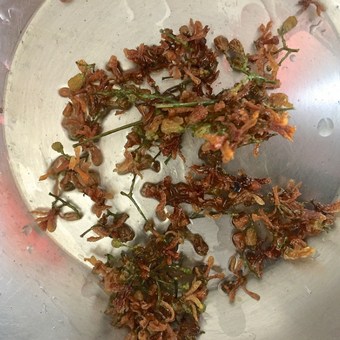
The different tastes forming this sweet - sour - hot - bitter- astringent dish are believed by Tamilians to represent the different facets of life and living and therefore are part of the meal on this auspicious start of the year. Pungent heat from the chili, sourness from the mango, sweetness from the jaggery, savoury salt, bitterness of the neem flowers and the earthy slightly astringent taste of the fresh turmeric - this is indeed a flavourful dish.
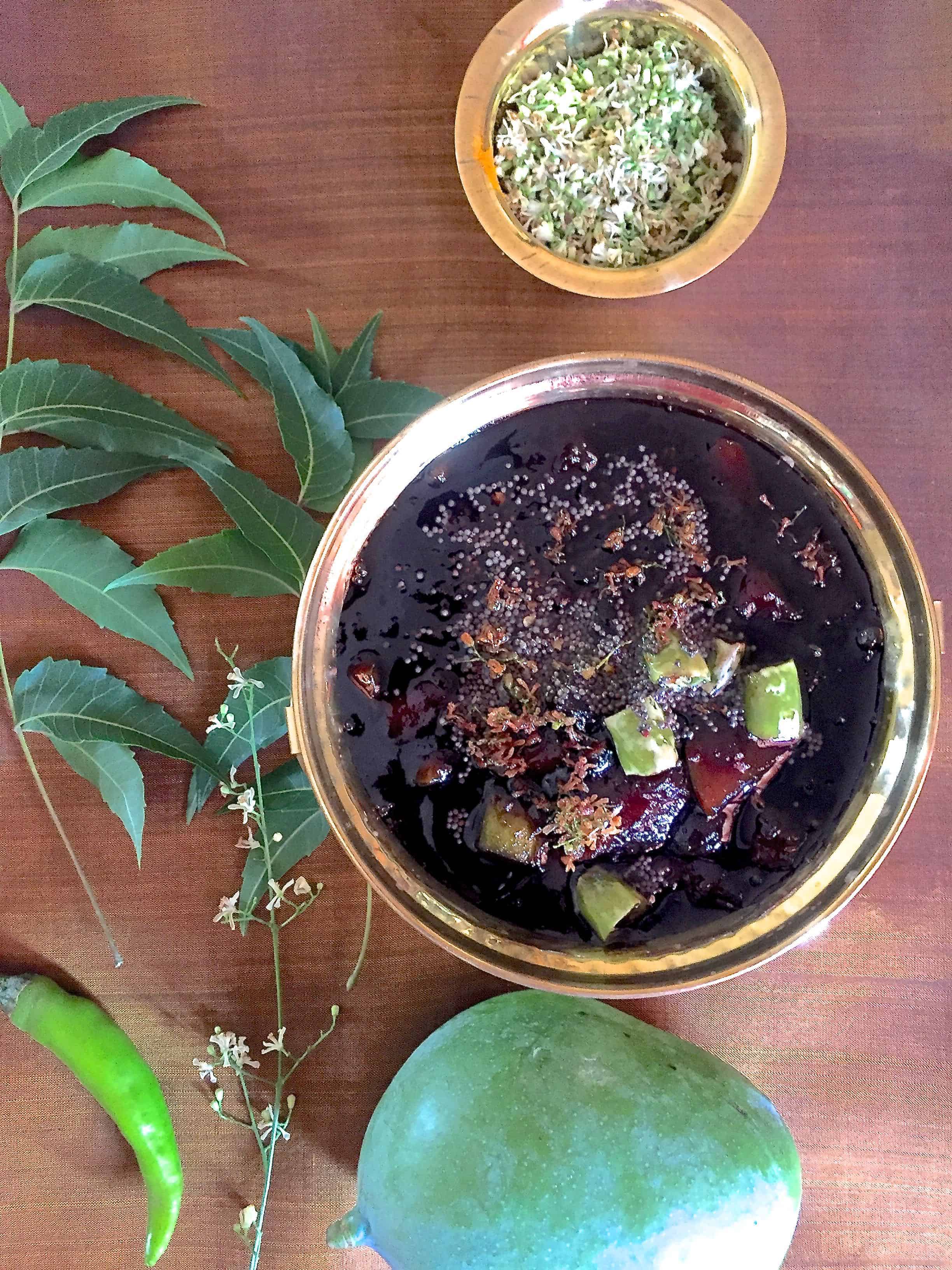
All the ingredients are seasonal and at other times of the year dry neem flowers are substituted for the fresh ones. For Ugadi and the Tamil New Year's Day however, fresh flowers are used. Most of the ingredients were easy to put together as raw mangoes were plentifully available in the market and I had dark jaggery which would lend a rich colour and flavour to the pachadi. Fresh zero pesticide turmeric powder from First Ago Farms were on hand. The neem flowers though, led me quite a dance. In Chennai these flowers of the neem tree are easily available, either from a tree in a neighbours garden or in the vegetable market.
At Bangalore however, the neem in our apartment was just a sapling and not ready to put out flowers. Other trees in the neighbourhood didn't seem to have flowers and were anyway too tall to attempt to pluck flowers from them. Our apartment ladies WhatsApp group suggested that I try with the vegetable vendors who sit at a makeshift roadside shop a short distance away. The first visit 2 days ago was promising, as the lady vendor said she would get the flowers for me and to come back next day. Four trips later in the hot sun on a dusty road with tearing traffic and no pavement to speak off, and she said she would 'pakka' get them for me this evening.
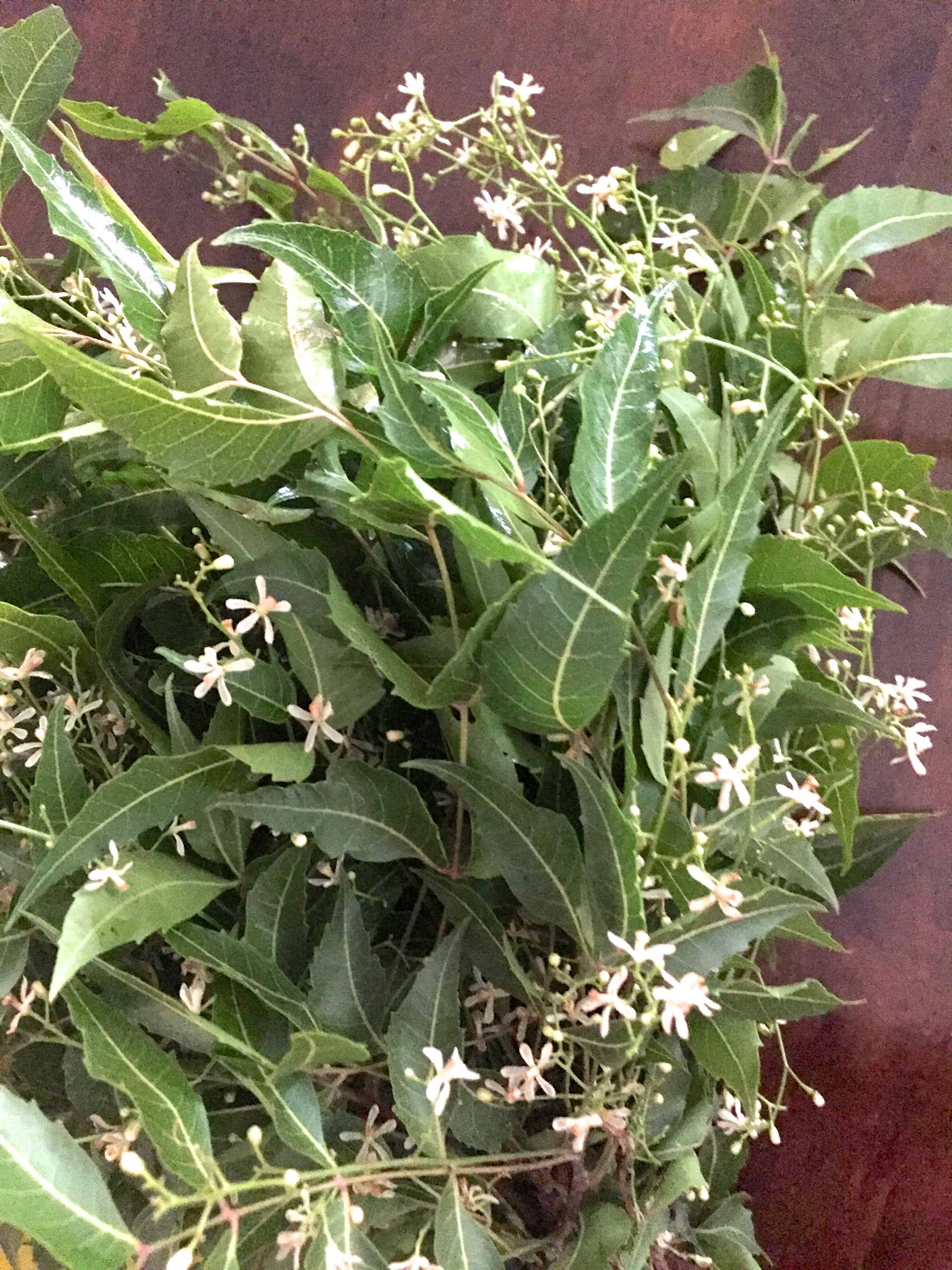
By now I had decided to make the Raw Mango pachadi without the neem flowers, when to my delight and gratitude, my friend Nisha 'raided' a tree at a temple nearby and got me a bunch of neem leaves, with, as another friend Kevin commented, star like pretty pretty little flowers. Carefully snipping off the flowers without stalks and leaves, I had my 2 teaspoons full of precious Neem flowers for an authentic raw mango pachadi! If the friendly roadside vendor does get me more flowers this evening, you will very soon see a post for a neem flower rasam, on the blog!
Making the Raw Mango Pachadi:
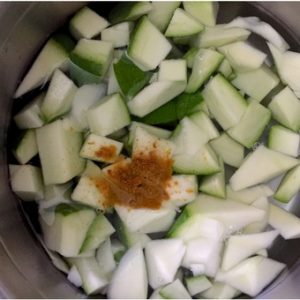
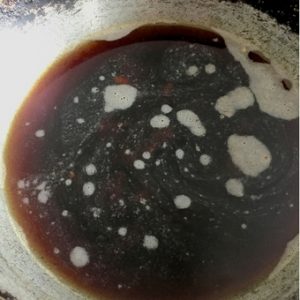
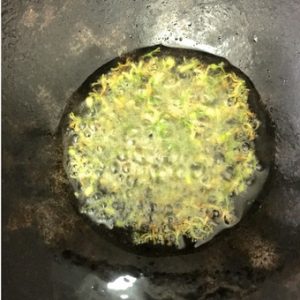
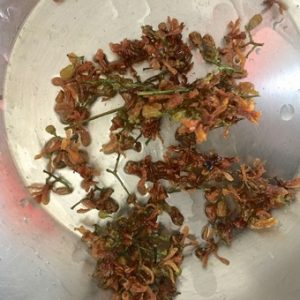
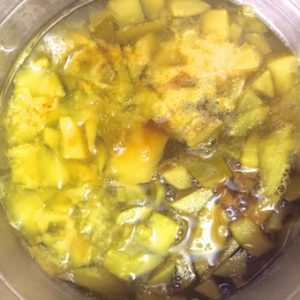
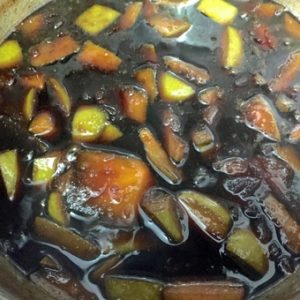
Other traditional Tamil cuisine recipes :
Panakam - the Jaggery Summer Cooler
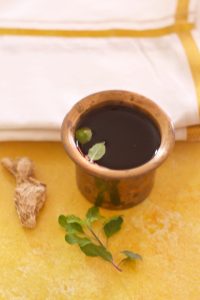
Neer Mor - Delicious Buttermilk
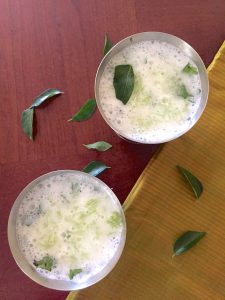
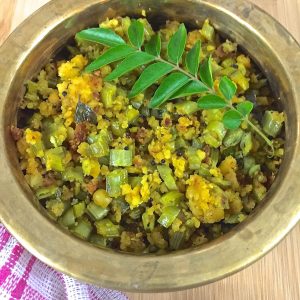
"Recipe"
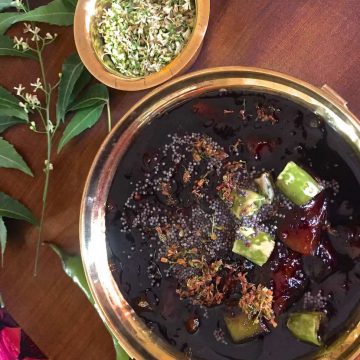
Raw Mango Pachadi with Neem Flowers - for Tamil New Year
Ingredients
Cooking the Mango
- 2 cups raw mango pieces
- 1 ½ cups water
- ⅛ teaspoon turmeric powder
- ½ teaspoon salt or to taste
Dissolve the Jaggery
- 1 ½ cups jaggery
- 1 cup water
Thickener For the Pachadi
- 1 teaspoon rice flour
- 2 teaspoons water
Tempering
- 2 teaspoons Sesame oil / gingelly oil
- 1 teaspoon Mustard seeds
- 1-2 Green chillies or red chillies as preferred
Garnish
- 1 teaspoon ghee
- 2 teaspoons fresh neem flowers
Instructions
- i. Slice mango into even sized pieces, or grate the mango. I keep the peel intact but this makes the cooking time longer, so if you want you may peel the mango and then slice it. Heat water (quantities are in instructions above for cooking the mango) and add the slices of mango. Add turmeric and salt, stir. Bring to a boil and then simmer till the mango is soft and cooked. (about 20 -30 minutes, maybe more if the peel is retained). Once the mango is cooked, if there is water above the level of the mango, boil it away.
- Meanwhile, heat the water (quantities in instructions above for dissolving jaggery). Break the jaggery into small chunks and add. Stir till the jaggery dissolves (about 5 minutes). Switch off the stove. Filter to remove any impurities, and keep aside till the mango is cooked.
- Add the dissolved jaggery to the cooked mango. Stir well. Boil on high for 5 minutes or till the mango stew is thick, stirring frequently so that it does not 'catch' at the bottom of the pan and burn. The colour of the pachadi will darken as it cooks. The darker the jaggery, the darker the pachadi will turn. Dissolve rice flour in water and add, to thicken the raw mango pachadi. Stir and cook for 2-3 minutes more. Remove from the stove and transfer to a serving bowl.
- Heat oil and add mustard seeds. Once they burst, add green chilli slices. Pour the tempering onto the raw mango pachadi.
- Heat ghee and fry the neem flowers on low flame, till they darken to a rust brown or dark red. Pour the flowers over the pachadi. Serve with rice and sambar, rasam and portal. I like it with dosa and chutney too.


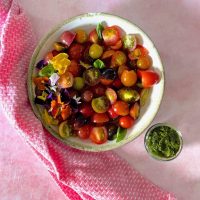
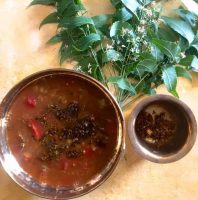
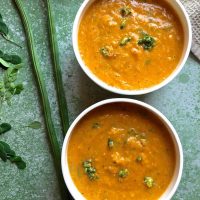
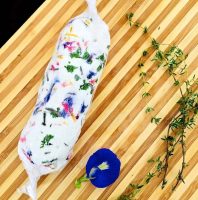
Comments
No Comments